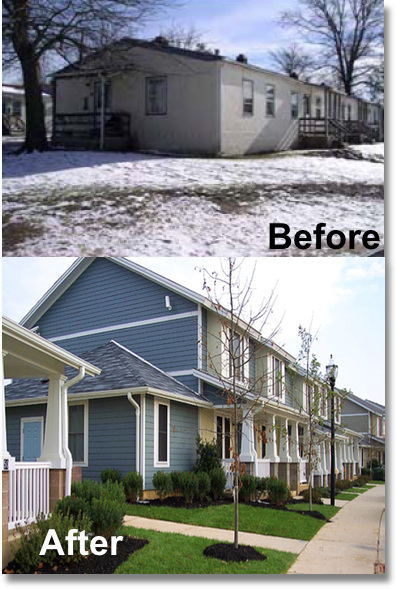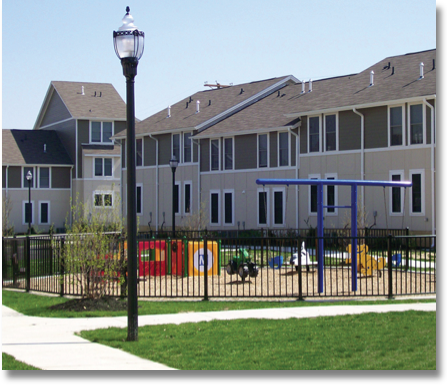 METRO'S ROLE:
METRO'S ROLE:
Critical to success of the project was Metro’s role in securing financing which included three highly competitive and consecutive tax credit allocations resulting in $54 million in private equity.
 PROJECT OVERVIEW:
PROJECT OVERVIEW:
Countryside Village in Upper Deerfield Township was built during World War II to house relocated Japanese American internees from the West Coast who were employed by the pioneering frozen foods company eventually known as Birds Eye Foods.
Over time the 40-acre site, which contained 326 rental units within 57 bunker-like buildings, became a last resort for families in need of affordable housing.
The new Countryside Village Apartments were designed to promote safe, walkable and livable streets and blocks. Rear yards were developed to include additional parking and open space such as tot-lots and gardens. The community now offers apartments accessible for the elderly and handicapped. A new Community and Learning Center was placed strategically central to the entire Village, promoting an enriching and supportive community environment.
RESULTS:
Due to a limit on the amount tax credits that could be awarded to a project in one year, the redevelopment of Countryside Village was completed in three stand-alone phases with separate ownership entities and financing.
Metro helped plan and finance all three phases with Low Income Housing Tax Credits, taxable permanent financing through the New Jersey Housing and Mortgage Financing Agency, gap financing through the State’s Home Express Program, as well as conventional construction financing. The three phases combined were awarded $54 million of Low Income Housing Tax Credits.

- Phase I consisted of 100 new housing units, constructed and fully occupied in 2006 at a cost of $22.4 million.
- Phase II consisted of the demolition of 106 existing units located in 17 structures, and the construction of 90 new, attached and architecturally complementary apartments. Development cost was approximately $22.5 million, and the project was fully constructed and occupied by year-end 2007. The units are all affordable to families earning less than 60% of median income in the county. Included in Phase II was the construction of a Management Center with associated laundry and community space facilities.
- Phase III began in the fall of 2007 and was completed in December, 2008. It consists of new construction of 93 apartment units in 18, two-story attached buildings at a cost of approximately $24 million.
Rendering by LWDMR & Associates PC





